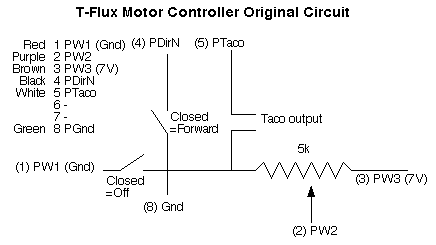News & Information
Membership
Contact Us
Sponsorship
Internet
Cafe
Gallery
People
Project
How to
Links
Motor
Conventional thought is that in wheel motors are more efficient. The theory goes that even though the motor weighs 2-3 times as much as some of the smaller brushless DC motors, the elimination of drivetrain losses in transmission more than make up for that.
We investigated this option and discovered that a new in wheel motor would probably cost around $25,000. This was the initial budget of our car. We always accepted that the price would probably blow out beyond $25,000 but we still couldn't justify spending the entire budget on one of the first components.
The other annoying thing about the motor is that the motor defines your battery voltage. The battery voltage defines the batteries you require. The battery voltage also defines the voltage your array must put out. This then lets you decide whether you need up converter MPPT's or down converted MPPT's. The strings of cells are done in lengths to give you 0.6V * number of cells = total volts. This number of volts must be bigger or smaller than your MPPT requirement for up and down converting. Until you choose your motor, you cannot choose most of the electrics of your vehicle.
Our eventual choice was for a Lillington T-Flux motor. These have been popular with many of the teams in the past. We bought ours second hand from Dripstone High School in Darwin who did not require its services any longer.
The motor is approximately 8kg and 250mm diameter. The specifications say it should be able to put out 2.5KW sustained and 3.5-4KW peak. Actual specifications have been a bit shaky as we didn't get the original documentatino with the motor. (photos)
The T-Flux motor has a simple controller box that plugs in to the motor controller to set the speed and direction and bring out the tachometer output. Glen Downie was kind enough to send us all sorts of useful information on the motor (which came with no documentation). This included the circuit diagram for the controller box which was deconstructed to mount directly into our dash. (photos)



